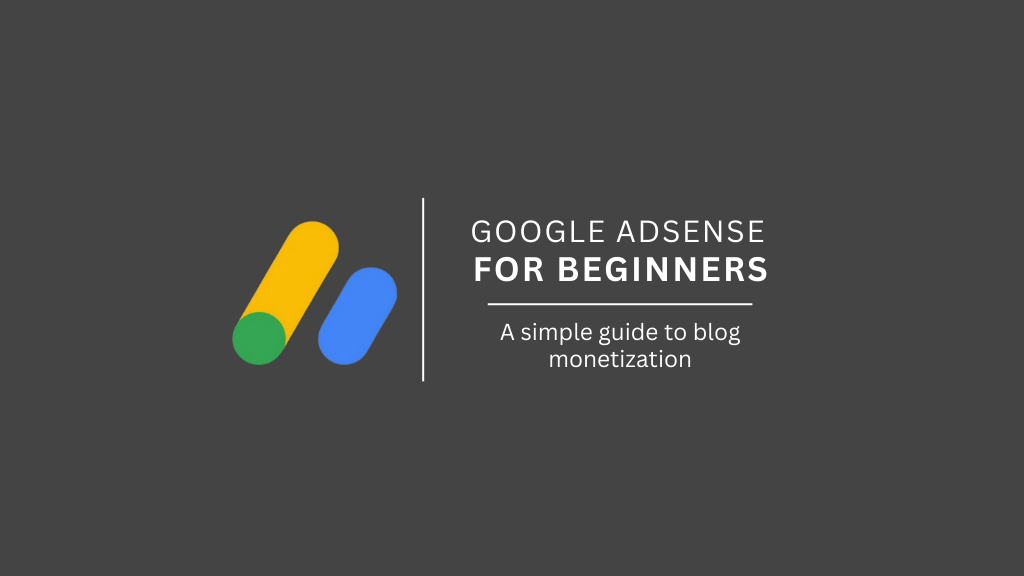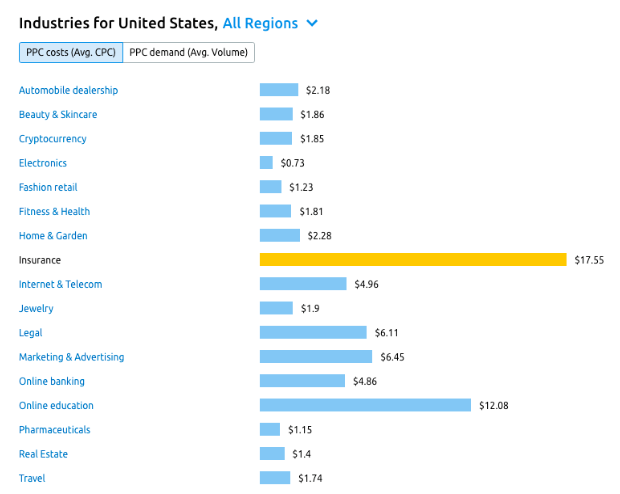
Curious about how to make money with Google AdSense? Imagine earning over $3,000 a month in passive income while focusing on creating engaging content for your audience.
Sounds exciting, right? Well, you’re in the right place.
This guide breaks down everything you need to know about Google AdSense, from its basics to advanced tips that can help you unlock the full earning potential of your blog.
You will learn how to set up your Google AdSense account, optimize your setup, and increase your blog revenue. This tutorial will provide actionable insights, real-world tips, and some insider tricks to maximize your revenue.
Let’s dive in!
What Is Google AdSense?
To start with, Google AdSense is a free, beginner-friendly advertising platform offered by Google that allows website owners, developers, and content creators to earn money by displaying targeted ads on their blogs or websites, apps, and videos.
The ads are tailored to match the interests of your audience and the content of your site, making them highly relevant and effective.
For instance, if your blog covers fitness tips, AdSense might serve ads for gym equipment or healthy recipes.
And… you guessed right! You get paid whenever someone views those ads.
Google handles the heavy lifting. They find advertisers, set rates, and even ensure that ads are relevant to your readers. Your only job is to create quality content and drive traffic to your site.
How Does Google AdSense Work?
AdSense uses sophisticated algorithms to scan your website’s content and serve ads that match your topics and audience.
For example, if your website content is about a skincare routine, Google AdSense will most likely display adverts from skincare vendors, increasing the likelihood that your readers will click on those ads.
But that’s not all. Google ads appear on your blog in spaces you allocate. This can be the header section, sidebar, or within the content itself without obstructing readability.
Google AdSense also tracks your blog reader’s activities on the internet using a web beacon to determine what ads they are most likely to interact with.
How publishers are paid? Well, publishers earn revenue every time someone views (CPM model) or clicks (CPC model) on an ad. AdSense pays out 68% of the ad revenue to publishers. Payments are issued monthly once your earnings exceed $100.
Getting Started With Google AdSense
Before you can start using Google AdSense, you will need to sign up for the program using your Google account. However, getting your website ready is subject to review and approval.
Onboarding is straightforward:
- Visit the AdSense website and register for an account.
- After registration, you’ll receive an ad code to embed in your blog’s HTML.
- Google will review your website within seven days and either approve it or reject your application
If your site gets approved, ads will start showing up immediately. You will then be able to use AdSense’s dashboard to monitor clicks, impressions, and revenue.
Understanding The Key Terms
If you are newly approved into AdSense, you may be frightened with terms like; Ad CTR, Effective CPM, and so others. Now is the time to understand what they stand for and how they are used.
I will make it brief. I will only list some terminologies you need to know right now. If you want to read the rest of the glossary and terminologies, kindly refer to this page.
- Page Impression: A page impression is the number of times a page is viewed. But sometimes, page impressions may differ from the data in your Google analysis, this is because AdSense does not count pages where ads were not displayed.
- Ad Unit Impression: an ad unit impression is the number of times an ad gets executed each time a page loads on the user’s browser.
- Clicks: A click is recorded whenever a website user clicks on one of the ads displayed on your website.
- Click-through-rate: this is the number of clicks received by an ad unit divided by the total number of ad unit impressions for the same ad.
- Effective CPM: This is calculated as the cost per 1000 impressions, however, do not confuse effective CPM with your earnings. In fact, Effective CPM is calculated by dividing your earnings by the number of page impressions, and then multiplying the final figure by 1000.
- CPM: Cost per 1000 Impression (CPM) is the cost for every one thousand impressions an ad unit gets. It is determined by advertisers. If the CPM for an ad unit is $10, then you will be paid $10 every one thousand times that ad is displayed.
Content Optimization: The Secret to Success
Good content is still the backbone of any successful AdSense strategy. In fact, without quality content, traffic won’t flow. And without traffic, there’s no revenue.
But content for AdSense isn’t just about quantity; it’s about targeting high-value niches and keeping your audience engaged. Let’s concentrate on that.
Discovering the most profitable niche
By now, you should have known that some topics are more profitable than others, even in drop-shipping and affiliate marketing. AdSense is not exceptional.
Advertisers are not bid equal, so you should expect differences in CPM and CPC.
A while ago, Elizaveta Shutova Of SEMrush did research and found out the top paying AdSense keywords in the United States, having “Insurance” at the very top of their list with an average CPC of $17.55.

You can do similar topic research using Ubersuggest to estimate an average cost per click of a niche.
Content creation
Make sure you don’t create content outside the theme of your blog and remember to follow Google’s content creation policy
I must tell you the truth, if you are starting a blog or a website for the purpose of making money with AdSense without adding value, you will be disappointed. So, find a niche where you can provide enough value.
In fact, take AdSense aside and ask yourself these questions:
- Who am I writing for?
- What’s their need? And why should they read my blog?
- Does my blog have answers to their questions?
- Will they be satisfied reading my blog?
If you can answer these questions, you are one step ahead. The next step is to research your content idea.
For example, if you want to write on the insurance space, but don’t know what to write about, you can take any keyword from the insurance industry and plug them into Ubersuggest to find topic ideas you can write about.
Google AdSense ads filtering mechanism
Another interesting thing about the Google AdSense program is the “filtering mechanism” used to filter ads for displaying them on your website. The purpose of filtering ads is to choose the best-matched ads.
- The relevance of content: this is the most important ad filtering criterion used by the AdSense program. It is the filtering concept that gives Google AdSense an important edge over other online advertising programs. Google AdSense determines the topic of your website content and serves ads based on what your blog talks about.
- Appropriateness of content: there are different websites and blogs built on different themes. For example, there are blogs on the “adult theme”, and google knows just that. Since Google AdSense is open to anyone, both publishers and advertisers, they also control the content of the ads to prevent going off sense for anyone who will see the ads. Google does this by using sensitive language filters and language experts to determine the theme of a blog or website.
- Competition filter: Since Google serves ads based on the content of your blog, your own competitor’s ads may show up on your blog. To avoid this, Google provides a facility for blog owners, where they can specify competitors or advertisers whose ads should not display. This is very useful if you do not want to lose your traffic to your competitors.
- Own filters: you can also choose your default ads to display in case Google AdSense is not able to serve ads due to the unavailability of suitable ads.
FAQs
How much traffic do I need to earn $3,000 a month with AdSense?
To earn $3,000 a month, you’ll need around 60,000 to 100,000 page views monthly, depending on your niche’s CPC rates.
What are the top-paying niches for AdSense?
Insurance, legal services, and tech-related topics tend to have the highest CPC rates.
Can I use AdSense on a WordPress blog?
Yes, AdSense works seamlessly with WordPress. You can use plugins like Ad Inserter to manage ad placement.
What’s the minimum payout threshold for AdSense?
The minimum payout threshold is $100. Once you reach this amount, Google will issue your payment.
How can I improve my AdSense earnings?
Focus on high-quality content, use strategic ad placements, and target high-CPC niches to boost earnings.
Can I run other ads alongside AdSense?
Yes, but make sure they don’t violate AdSense policies. Always review the terms to avoid penalties.
Conclusion
Google AdSense is a reliable and scalable way to monetize your blog. By focusing on quality content, optimizing your ad placements, and targeting the right niches, you can turn your blog into a lucrative business.
With time and effort, $3,000 a month is just the beginning. Ready to get started? Sign up for AdSense today and take the first step toward financial freedom.






